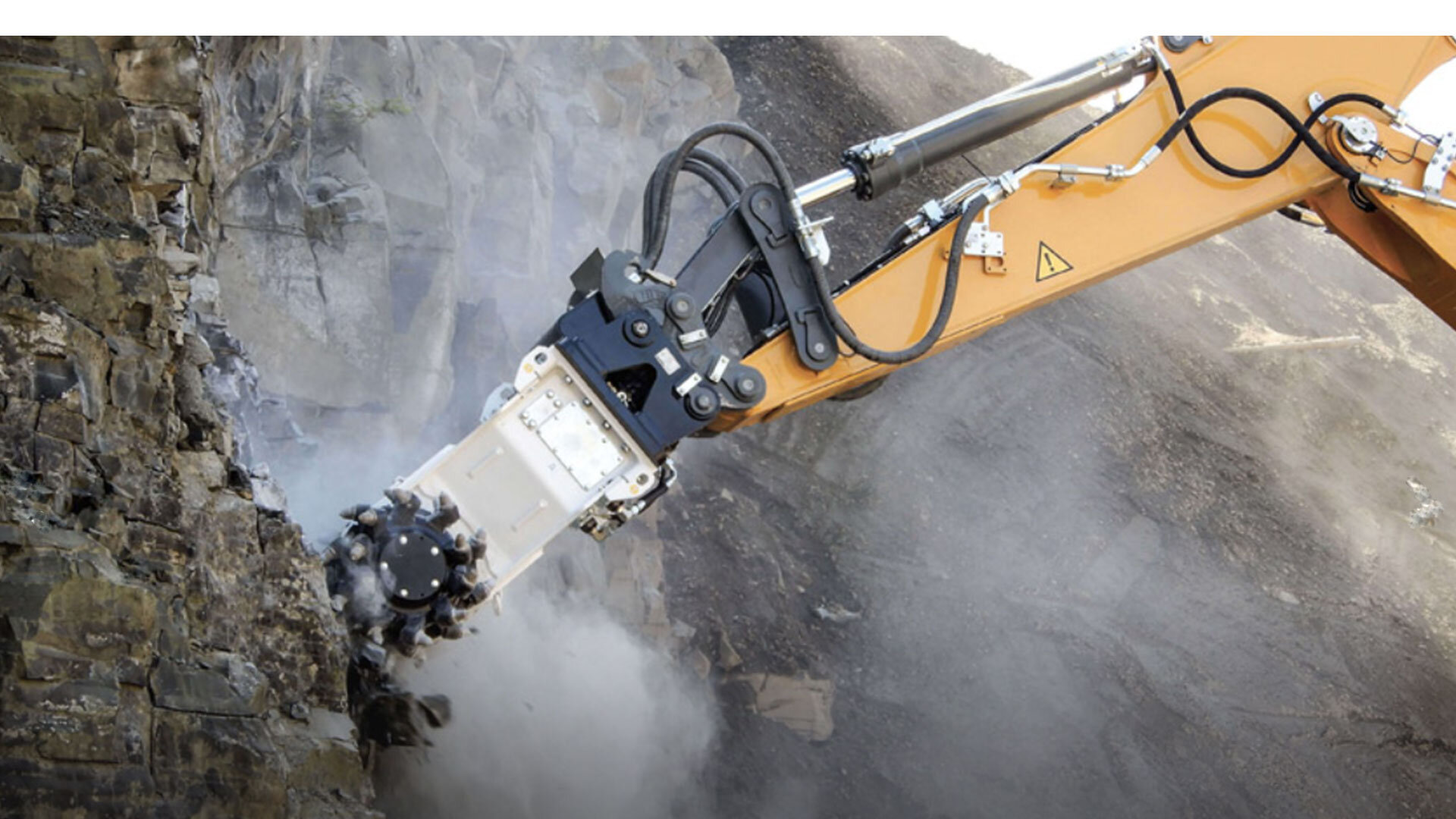Twin header rotary cutters are also known as rock grinders, as this aptly describes their use in dislodging and extracting material in quarries and mines.
SIMEX is widely acknowledged to be the market leader in rotary cutting machine technology, which has been specifically developed for the tough conditions of the mining industry.
The cutting machine may also be employed in the construction, demolition, tunnelling and wall profiling industries, making it a versatile tool.
Italy-based SIMEX has been at the forefront of designing and manufacturing highly durable and high performing engineering products to solve specific problems in the mining sector.
Impressive Features
The twin header rotary cutter uses special patented technology with high torque that can bore through the toughest of material.
The product has several other impressive technical features worth mentioning. Maximum cutting force for the rotary cutting machine varies from 13.5 to 114.5KN, depending on the specific model.
An integrated high displacement hydraulic piston motor in the rotary cutter ensures high torque and high performance is consistently maintained during its deployment.
A filter on the feed line of the rotary cutter prevents impurities from entering the machine’s motor system.
Gaskets fitted to the rotary cutter’s drums guard against dust while the machine is working in the ground.
The rotary cutter also features double support bearings for each of drums to ensure a longer service life for the machine, as its shaft system transmits only motion and bears no load.
Replaceable anti-wear plates are a low cost in terms of the machine’s maintenance.
Craig Einam, product specialist in Queensland Rock Breakers said the mining machine is inherently adaptable. “It can operate in all weather conditions and when vibration and shock waves from a blast is not acceptable,” he said.
“The SIMEX twin header rotary cutter can also be used under water.”
Alternative for Drilling and Blasting method
In addition to creating noise emissions and shock waves, drilling and blasting at mine sites can be a time-consuming and costly business for operators.
It can take considerable time to drill the necessary holes at a mine site in preparation for placing explosive charges into them ahead of blasting.
Then it can take additional time to clear a mine site of personnel to allow the blasting operation to proceed safely, and afterwards, once the blasting has occurred and the workforce can return to work.
Furthermore, use of the two-stage traditional mining process can be limited by terrain and topography, weather conditions, and safety considerations in the case of restrictive and difficult to access areas.
Fast set-up and quiet operation
The SIMEX twin headed rotary cutter has a relatively fast set-up time allowing it to be quickly deployed, even in difficult to reach mining locations, and it has many in-built safety features.
The SIMEX rotary cutter can be put to work in underground mining areas with tunnels, and in highwall mining in surface or open-cut mining.
Noise emissions from the rotary cutter are relatively low when compared to other mechanical mining machines and other methods of extraction, Mr Einam said.
A twin-headed rotary cutting machine is usually transported using a carrier machine, allowing the equipment to be easily moved around mine sites to different working areas.
There is the option of transporting the rotary cutting machine on carriers ranging from 2.5t to 70t depending on the requirements for the machine.
Significant time savings are possible with the SIMEX twin header rotary cutter.
“The time saving is in set-up and removal from job to job,” Mr Einam said.
In addition, a rotary cutter is suitable for removing smaller quantities of material left behind by traditional mining methods.
In this situation, the costs of drilling and blasting can be prohibitive, relative to the amount of material extracted, or the working area in the mine may be too restrictive to carry out blasting at close quarters.
“In underground and open-cut mines where small quantities of material need to be processed, this can sometimes be when a pocket of material for example coal is left behind after traditional open-cut mining,” Mr Einam said.
The rotary cutter can also tackle tunnelling work and performs well at wall profiling work at building sites or basement digging, allowing the technology to be used in the construction industry.
Another market-leading feature of the SIMEX twin header rotary cutter is that its hydraulic system is fitted with accumulators that act to protect the unit from hydraulic pressures while the unit is in operation.

